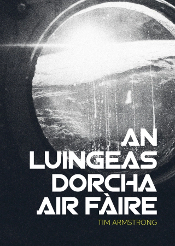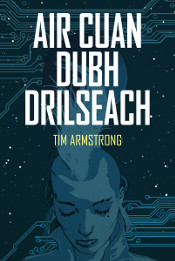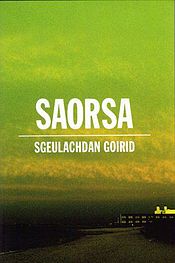Seo clàradh dhen phrìomh òraid a rinn mi aig co-labhairt bhliadhnail a’ Foundation for Endangered Languages dà sheachdain air ais. B’ ann innte a bhruidhinn mi air Sabhal Mòr Ostaig agus air foghlam tro mheadhan na Gàidhlig aig ìre an oilthighe.
Tha mi a’ creidsinn gu làidir anns a’ Cholaiste. Tha i sònraichte, agus mar a thuirt mi aig deireadh na h-òraid, tha mi am beachd gu bheil i a’ cur gu mòr ri neart na Gàidhlig:
A college that not only teaches about a minority language, but that also functions in that language, can serve as a revitalizing site of language use, as an organizing node in networks of minority-language speakers, and also, as a powerful site for ideological clarification in the context of a broader language-revival social movement. Establishing new sites of minority-language use is always a challenge, and no less so on a college campus like Sabhal Mòr Ostaig. In our work at the College, we have found that it is a common error to vastly underestimate the scale of this challenge. We yearn for language use that feels natural, that seems to just happen, but those days are long gone for Gaelic. If we aim to have Gaelic spoken in a particular space, then we have to self-consciously promote Gaelic use in that space. Keeping Gaelic going at Sabhal Mòr Ostaig requires continual ideological work; it never just happen ‘naturally’.
This disappoints some folk. For detractors, Gaelic as a networked, activist language feels artificial, fake, or staged in some way, but I strongly reject this critique. I spend almost all of my waking hours speaking Gaelic. It is my working language, I use it with my network of Gaelic-speaking friends on Skye, and I speak it at home. Gaelic isn’t a hobby or a performance for me; it’s a real, living language. And each year, I have the opportunity to work with a new group of talented young adults who are strengthening their Gaelic skills and acquiring strong identity connections to the language, and who then go on to use Gaelic in their daily lives, working in Gaelic and raising families in Gaelic all over Scotland and beyond. Gaelic isn’t a dead language for them either.
We are all very lucky. None of us would have these opportunities without the College. Sabhal Mòr Ostaig is our speech community, and for all its flaws, it serves as a powerful driver of the revival of Scottish Gaelic as a vital, spoken language in the 21st century.






Sin thu, Tim
Math fhèin!
Thàinig mi chun na h-òraid seo tron bhlog às ùire agad mu lìonraidhean…is tha mi ag aontachadh gur ann aig an ìre sin as motha a thathar a’ conaltradh an-diugh…tha RnaG air a bhith cudromach is feumail a thaobh seo: faodaidh dithis nàbaidhean a chèile a chluinntinn a’ bruidhinn Gàidhlig air rèidio far nach cluinn sa bhùth air sgàth X,Y, Z. Saoilidh mi cuideachd ma tha spionnadh aig daoine sna coimhearsnachdan traidisianta cumhachd is comas a shireadh gus an suidheachadh a leasachadh gur ann a nì sin feum dhaibh fhèin is do dh’ adhbhar na G san fharsaingeachd.
ACH….thug thu iomradh aig deireadh na h-òraid mu thèile mun dòigh sam bith thu a’ teagasg ficsean. A bheil clàradh agad dhith? Bhiodh sin fìor inntinneach. Is nam bu thoil leat taic ùghdair eile mu sgrìobhadh ficsean son nan oileanach agad….cuir brath thugam.
Cheers
Màrtainn